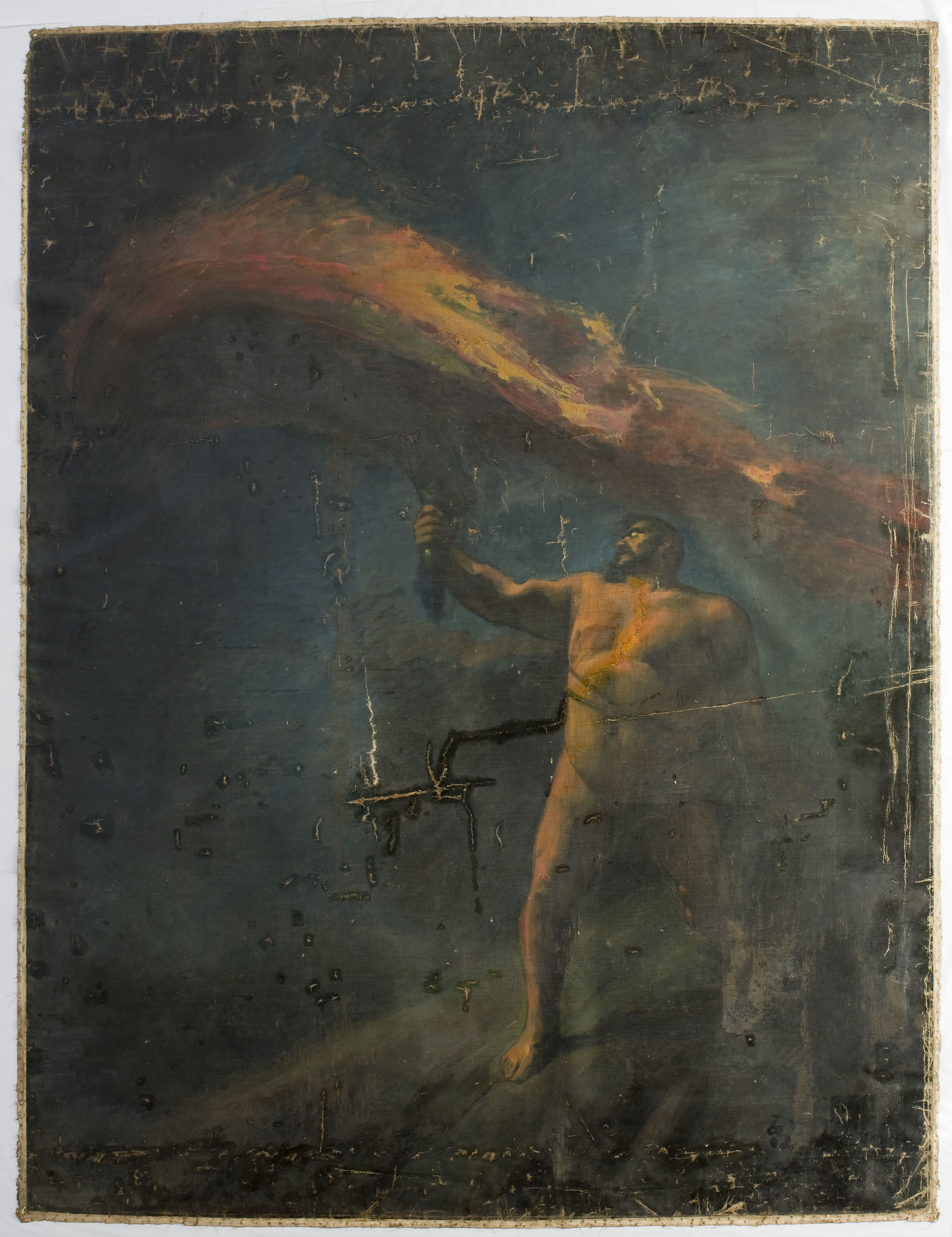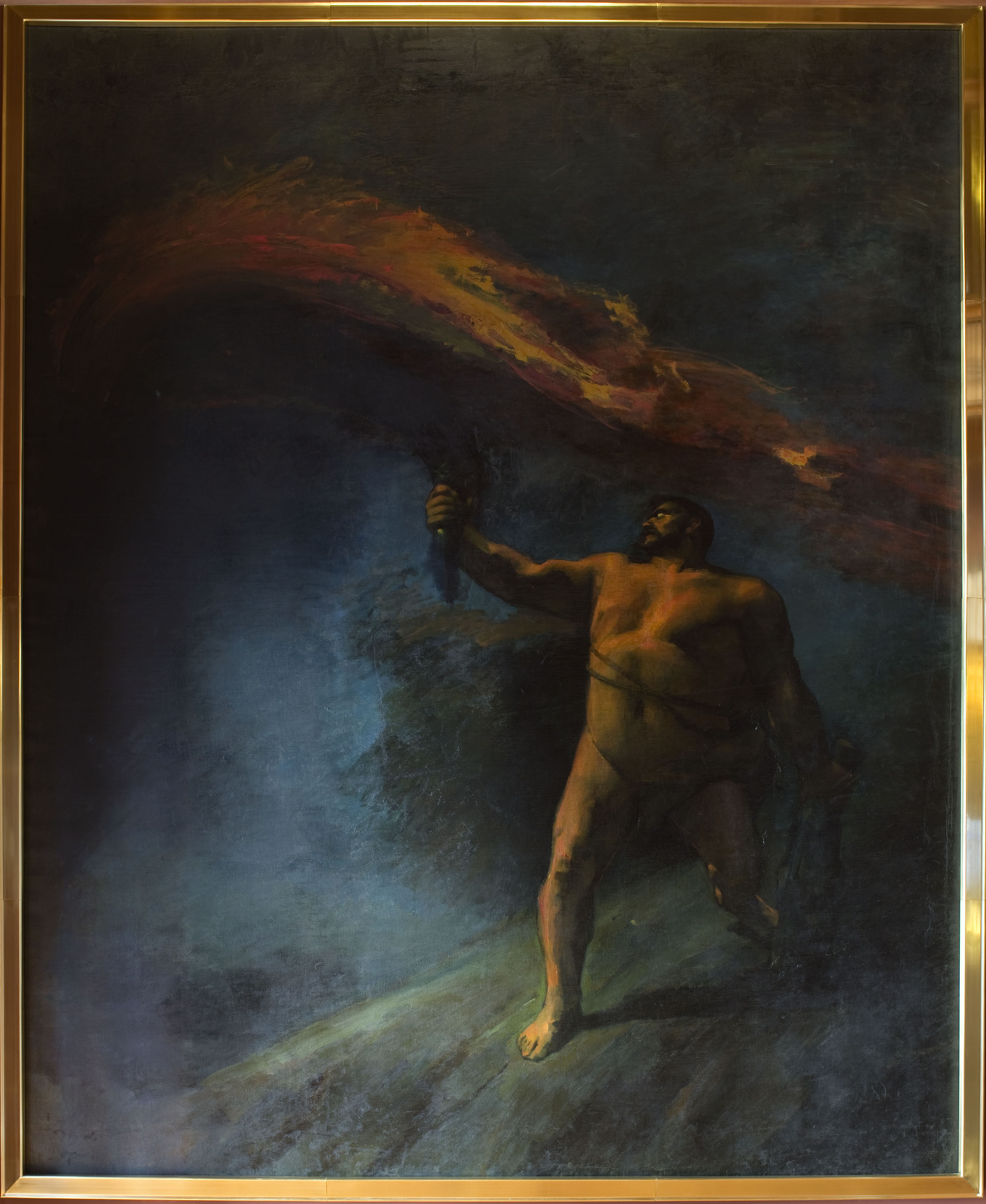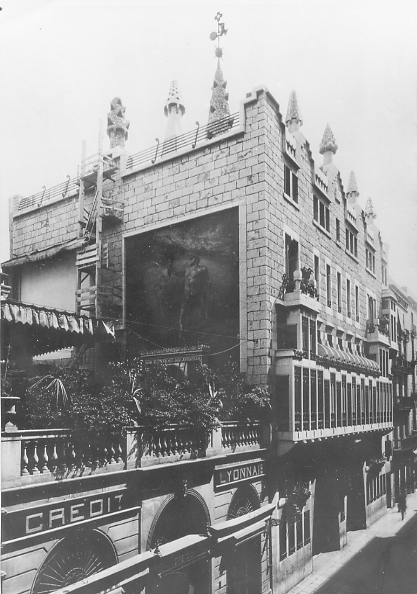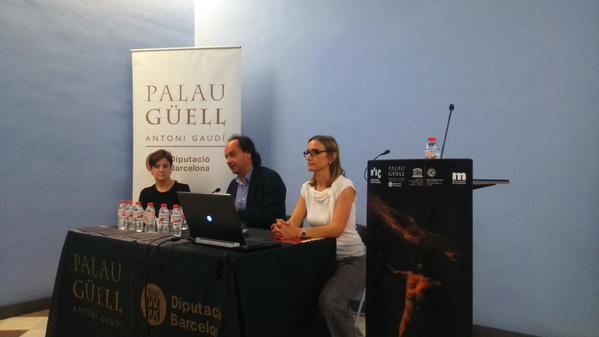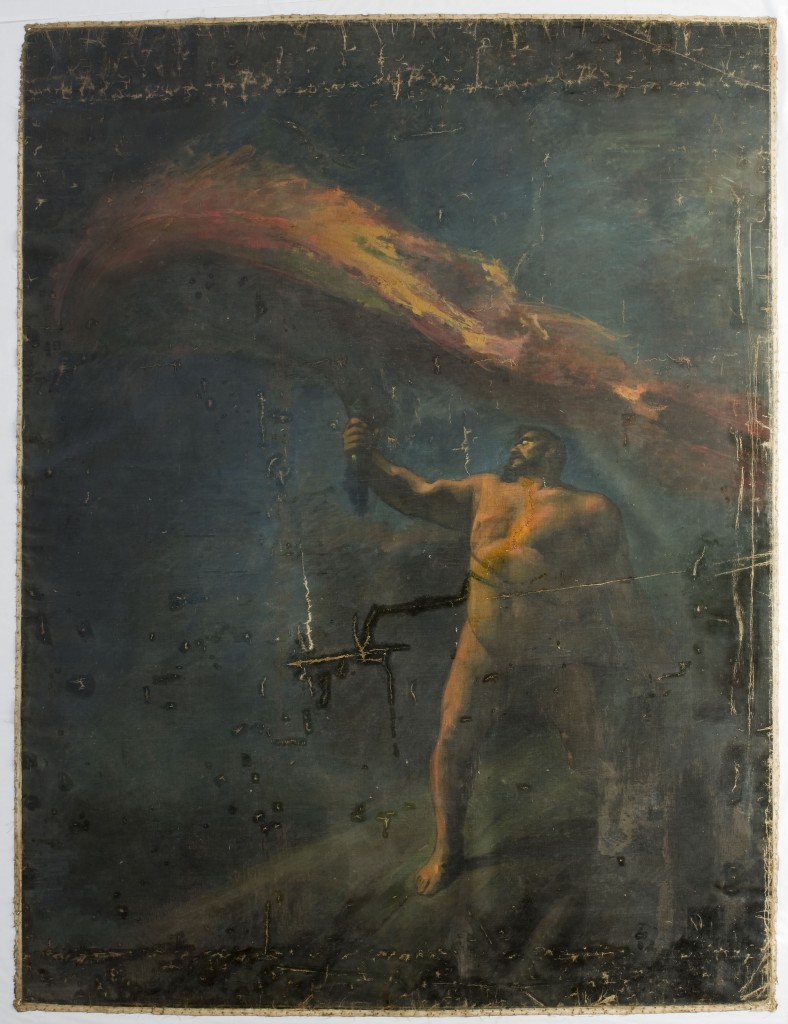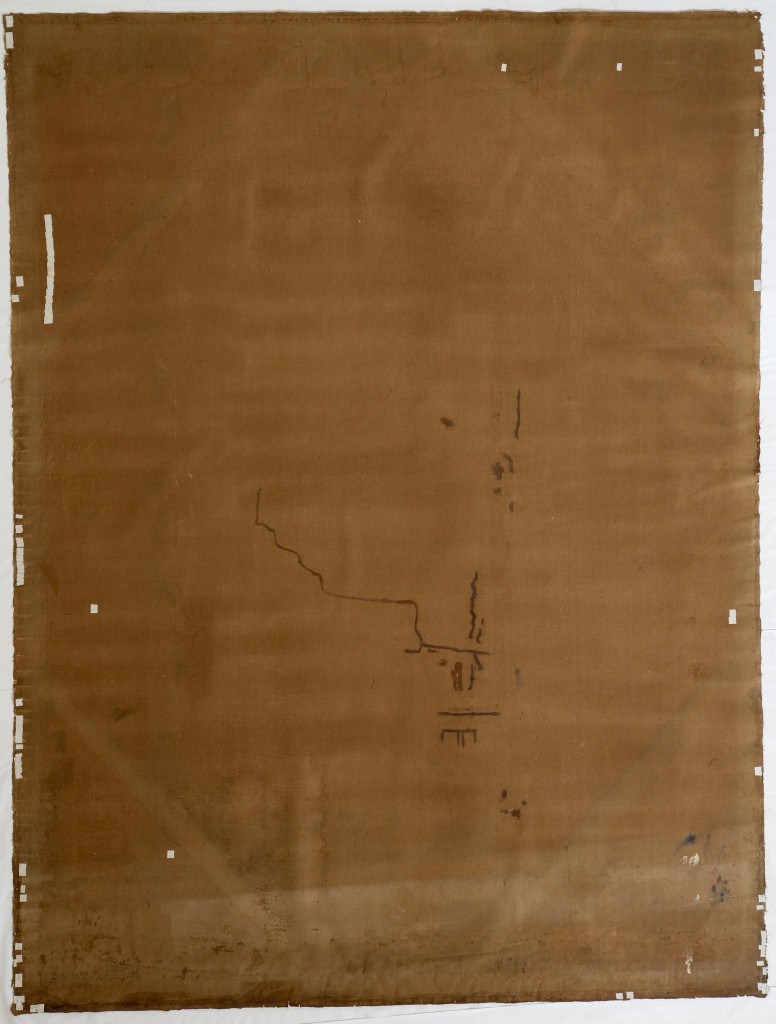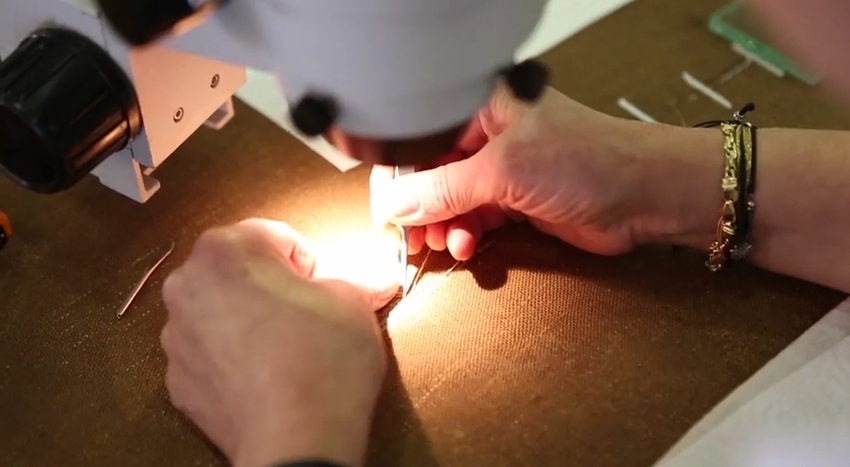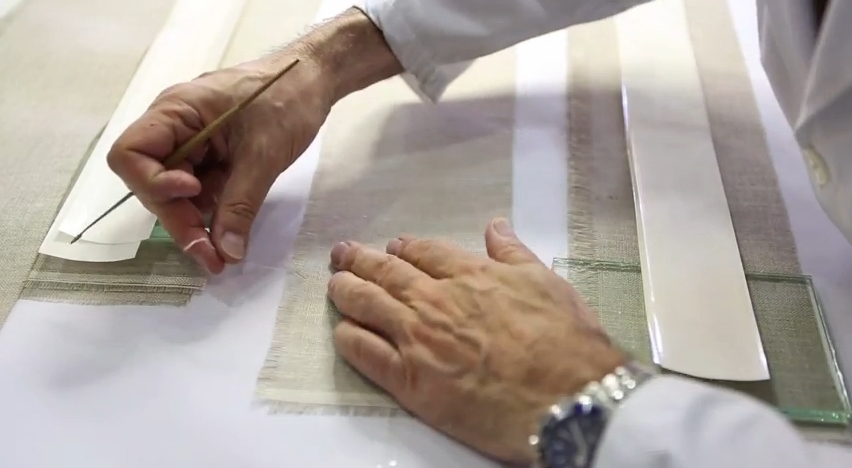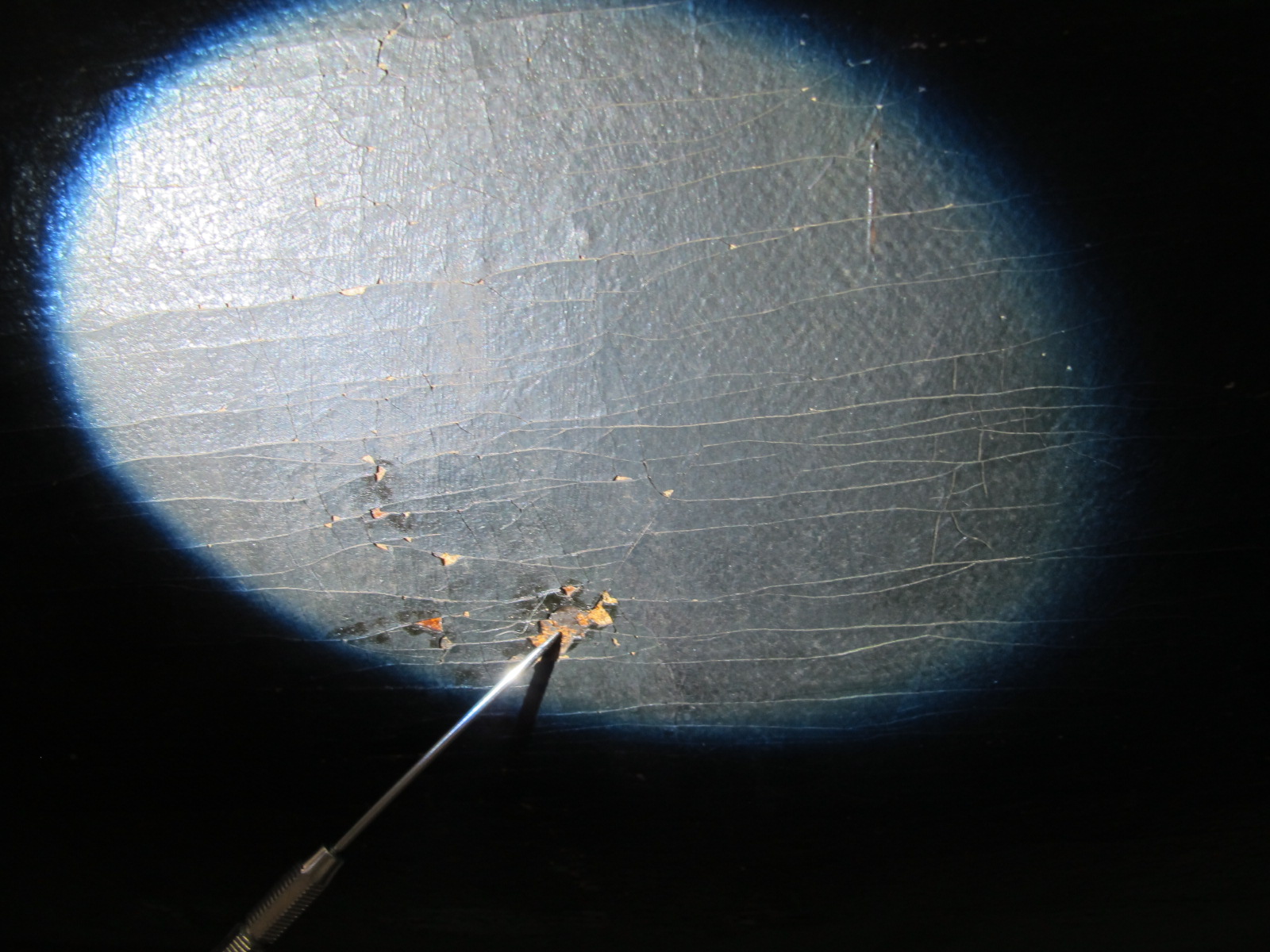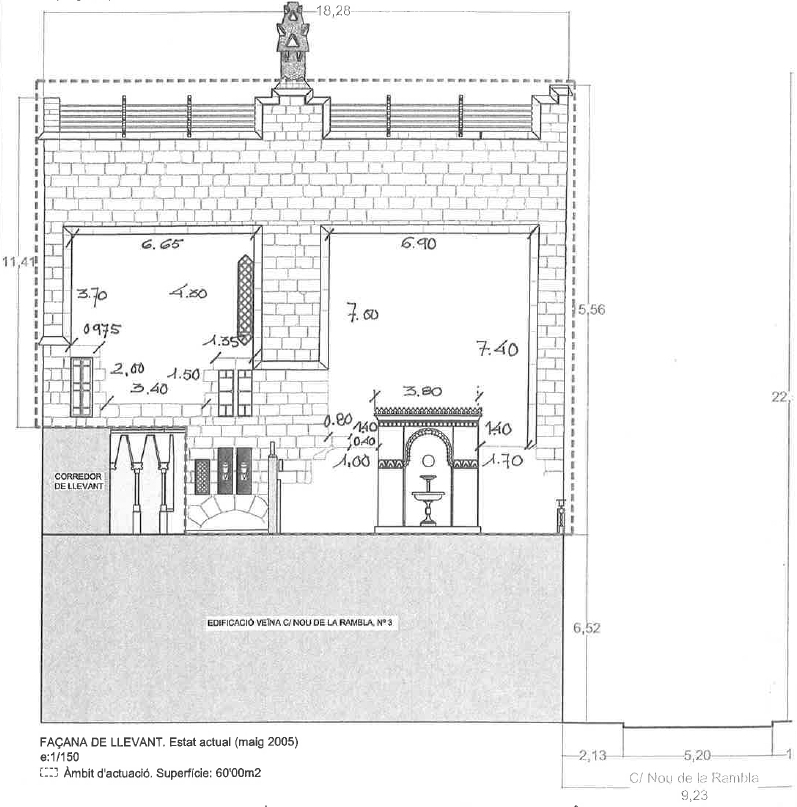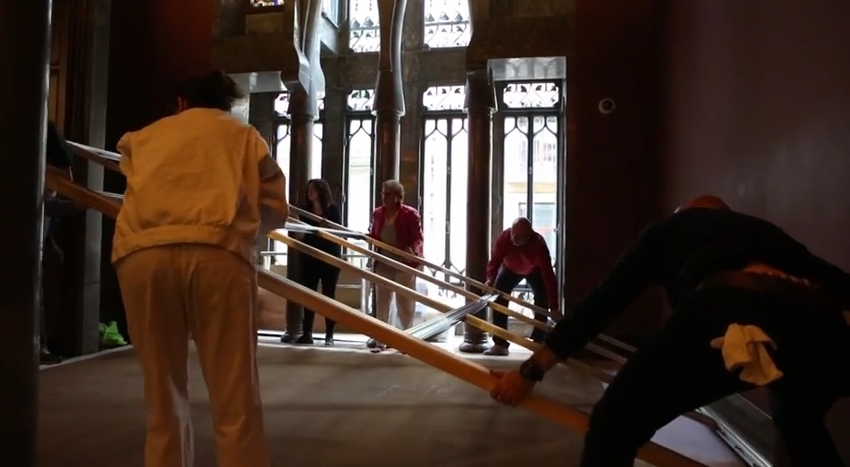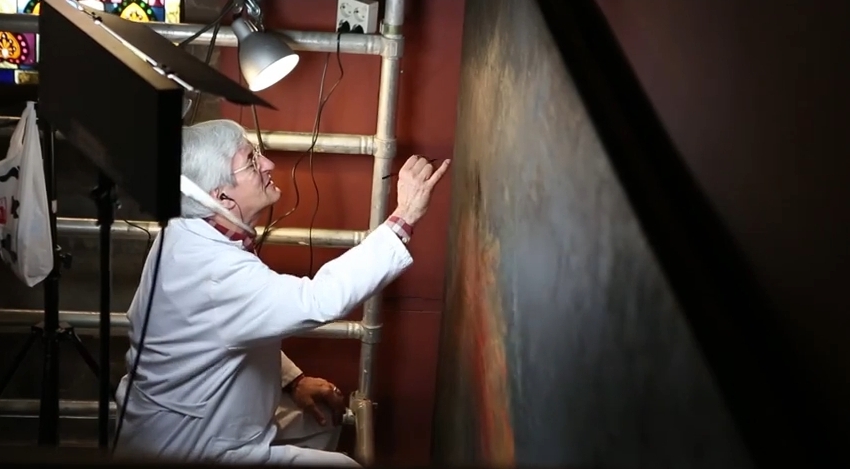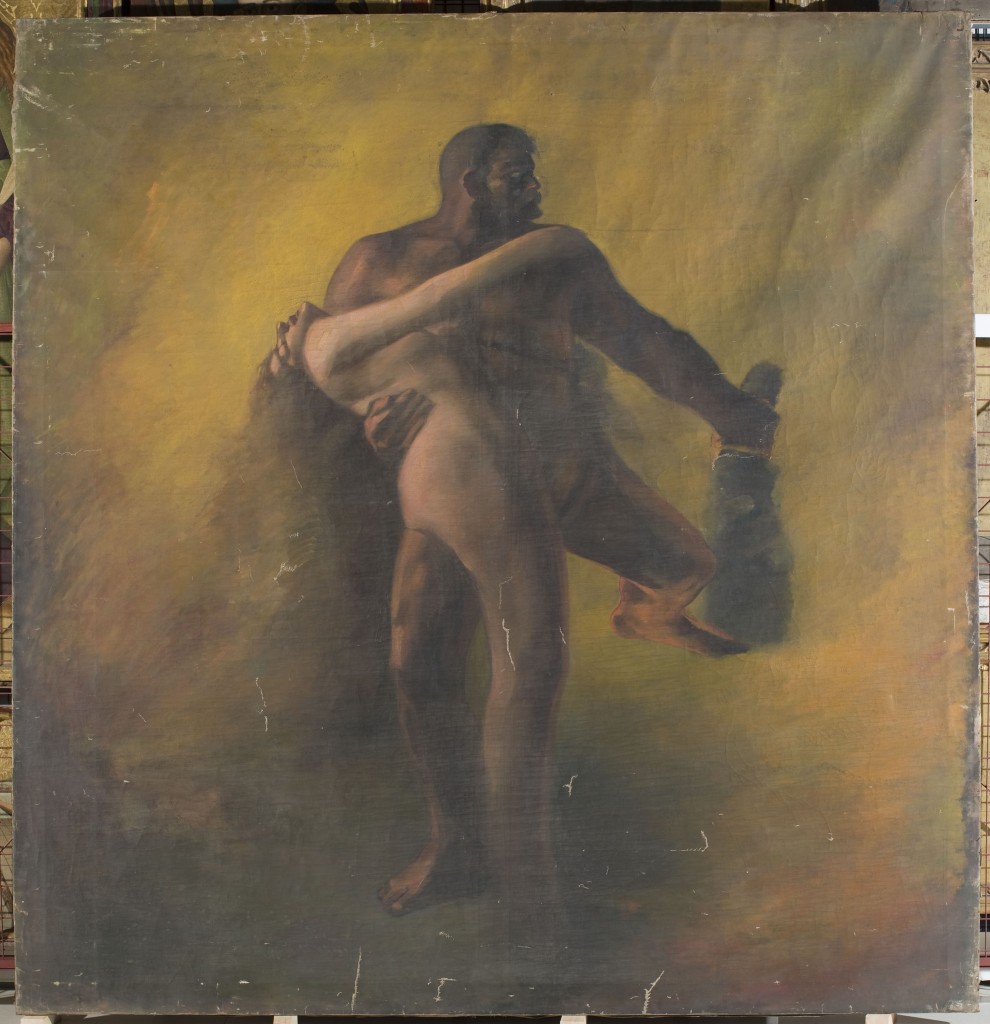Hercules Searching for the Hesperides by Aleix Clapés looks splendid once again in the Palau Güell
It has been over a century since Aleix Clapés took charge of the pictorial decoration of the Palau Güell, designed by Antoni Gaudí, to paint three versions, of different sizes, but practically identical, of Hercules Searching for the Hesperides, one of the mythological scenes that the poet Jacint Verdaguer described in L’Atlàntida. Of the three, the largest, the mural that decorated the party wall of the Palau Güell, gradually deteriorated and has been lost, whilst the other two have been conserved in the Museu Nacional.
A collaboration agreement with the Diputació de Barcelona has made it possible to restore the large-size painting on canvas (420 x 345 cm), up until now rolled up inside acylinde rin the museum’s reserves, and cede it under a contract of loan and restitution so it can be seen in the landing-vestibule of the main floor of the Palau Güell, where it completely adapts to the architectural surroundings, as do the rest of Clapés’s paintings that decorate the central lounge.
The third version is a small-size painting (74.5 x 69.9 cm) that probably served as a model for the other two compositions and for the formalization of the commission by Eusebi Güell. This painting is exhibited in the galleries of the new Modern Art presentation, in vindication of a painter who was restless and daring, unconventional and without followers, who many people still do not know.
The process of conservation and restoration
Aleix Clapés, Hercules Searching for the Hesperides, circa 1890. Front and back, before the restoration
- Consolidating the support and cleaning the surface of the paint
The intervention on this work has not only enabled us to restore it, but also to carefully study the painter’s technique and creative process. It has been a challenge to work on a large-size canvas: the complexity of the handling and the weight of the object required, for example, planning the circuits wherethe work would have to passin advance, coordinating the manoeuvres and making enough room available so that the professionals who would be working on it would be able toreachthe whole surface.
Neither the stretcher nor the frame of this oil painting on canvas, in one single piece, has been conserved. But on the back there are marks of stretching around the perimeter with reinforcing crosspieces sloping towards the four corners; possiblyafixed rectangular-sectionstrut without wedges, over which the canvas had been tensed. Some lines of holes in the upper and lower strips indicate that, at some moment, the painting was nailed in a smaller format. The canvas showed folds and undulations, as well as cuts, tears and holes, some of which had been repaired preventively with patches in 1998. On the surface of the painting a layer of dust was observed stuck to it, giving it amatt appearance, with widespread erosions, isolated areas of loss and splitting. A crack marked with horizontal lines indicates that at some time the canvas may have been rolled up with the painted side facing inwards, contrary to what is considered orthodox.
The first stage of the intervention consisted of a micro-aspiration and aprofound cleaning of the back, the treatment of the deformations, and stickingstrips of linen to the entire perimeter, which was weakened and damaged, to strengthen the support and allow for the canvas to be nailed and tensed on the stretcher once again.In the areas that weretorn, cut or with loss of canvas, suturing was done, executed withtextile microsurgery reinforced from time to timewith thread bridges, to thoroughly redo the binding of the fabric with a minimal amount of natural and reversible adhesive.
- Analysis of the pigments
Before starting to clean the paint layer, a micro-sample was taken to characterize the materials on the surface, learn the stratigraphic sequence and identify the strata. The analyses show a layer of preparation of lead white agglutinated with oil, which we have found before in other large-size Catalan paintings from the late nineteenth and early twentieth centuries. Moreover, there was a dark primer, reddish or blue depending on the area, with one or more layers of colour on top, and varnish on the surface.The cleaning, which has been done with a harmless aqueous medium, made it possible to recover the shininess of the varnish. Finally, the uneven areas were stuccoed and all the colour losses with pigments and retouched varnish were reintegrated.
On the blue background, Prussian blue is present,an artificial pigment that was discovered in Germany at the beginning of the eighteenth century. It was very popular among artists because it was cheap, stable, compatible with most pigments,and it made it possible to achieve a deep blue. The analysis of a micro-sample taken from the area of the flame enables us to deduce that Clapés corrected some parts of the composition by covering, with the blue of the background, some of the outlines of the initial depiction of the flame.
- Technique and creative process
In the course of the cleaning, traces of white chalk were found in a four-sided area (with squares measuring 20 x 20 cm), visible over the paint layer, that Clapés used to transfer the composition to the wall of the façade of the Palau Güell and paint the fresco on it at a scale of over 7 metres high by almost 7 metres wide, as technicians of the Diputació de Barcelona have deduced from the plan.
The work seems to have been painted quickly, with paint runs that the painter does not try to disguise, with little thickness of paint in the background areas and broad brush strokes full of material on the giant’s body and above all on the flame in the torch that Hercules is holding in his right hand. It is painted without worrying too much about the details and to be observed from a distance. It looks like it was sketched and finished poorly, a characteristic probably sought by the artist, who admired the French symbolist painter Eugène Carrière who left his works looking unfinished and blurred.
Finally, when choosing a stretcher for the canvas once it had been restored, one of wood and aluminium was selected, durable and easy to dismantle, giving the canvas all-over tension and making it easy to install a system to protect the back.
There is also a version conserved on canvas in the reserves of the Museu Nacional of the other mural composition that Clapés wanted to paint on the outside of the building, depicting Hercules and Pyreneand which was set on the same side. Although it is smaller (304 x 292 cm), it has technical characteristics similar to those of the restored painting, apparently from the same period, and it also entered the museum in 1928 as a donation by M. Lluïsa Güell. It is mounted on a wooden stretcher and, to the naked eye, it seems to have been carved around the edges.
Related Links
Video L’Hèrcules retorna al Palau Güell (Catalan)
Hercules returns to Palau Güell, article published by Palau Güell
Article taken from texts by Pepe Serra and Mireia Mestre for Hercules Searching for the Hesperides, published by the Diputació de Barcelona in May 2015.

